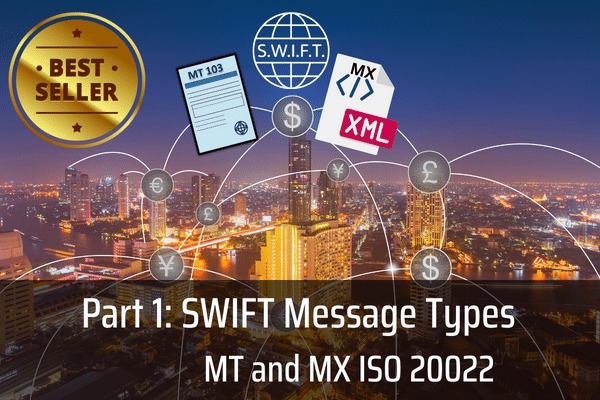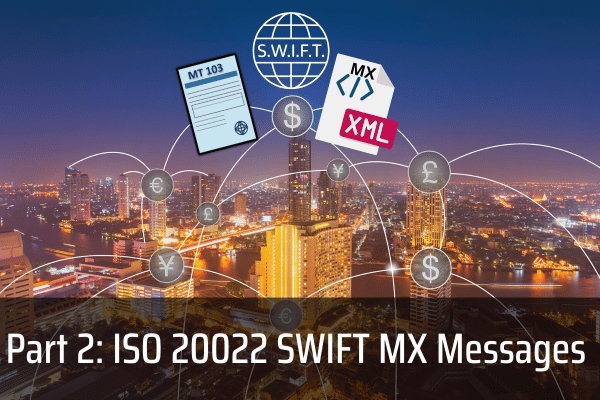There are no items in your cart
Add More
Add More
| Item Details | Price | ||
|---|---|---|---|

As we learnt earlier, SWIFT MX messages are built using XML (EXtensible Markup Language). There are two concepts to understand here - XML Message schema and XML message instance.
You can imagine an XML schema as a rule-book about what an XML document following that schema can contain or cannot contain. For example, it defines what elements can occur, the number of and order of the child elements, the data types of the elements etc. Any XML document that will follow the rules specified in that schema will become an instance of that schema. So the XML schema is like the mother and the XML instance is like its baby. A schema document has the file extension of .xsd (xml schema definition) whereas an xml instance or document has file extension of .xml. A XSD file is written using the XML language itself.

An XML schema can contain the definitions of, suppose, 100 elements. There may be multiple instances of a single schema. It's not mandatory for those instances to contain all the 100 elements. One instance can contain only 10 elements, another can contain 30 elements defined in the schema, but all those elements that appear in the instance must follow the rules defined in the schema.
So, in the ISO 20022 website, you will find all the base or the mother message schema definitions. For example, the pacs.008 or pacs.009 message schemas. When an actual pacs.008 message is created, it must follow the rules defined in this schema. But this schema defines hundreds of elements which a pacs.008 message can contain. The actual message, which you may call the message instance, may contain only a few elements from that schema which are required for that particular payment infrastructure and payment purpose.
WANT TO READ MORE?
Already signed up/ logged in? Then you are all set!

Basics of Payments | SWIFT MT/ MX Payment Message Types with examples | SWIFT GPI

CBPR+ Usage Guidelines | XML and Messages Schema | Messages Structure | MX Messages Examples

The Ultimate No-Nonsense Guide to SWIFT MT and ISO 20022 MX Message Types